Soil microorganism colonization influenced the growth and secondary metabolite accumulation of Bletilla striata (Thunb.) Rchb. F
- PMID: 40335962
- PMCID: PMC12060540
- DOI: 10.1186/s12866-025-03960-2
Soil microorganism colonization influenced the growth and secondary metabolite accumulation of Bletilla striata (Thunb.) Rchb. F
Abstract
Bletilla striata (Thunb.) Rchb. F., a perennial herbaceous plant renowned for its medicinal properties, exhibits growth and secondary metabolite production that are significantly influenced by soil microorganisms. Exploring how soil microorganisms influence the growth and secondary metabolites of B. striata, we cultivated sterile seedlings in radiation-sterilized soil inoculated with microbiota from either sandy clay or sandy loam soils. Following a two-year growth period, we employed 16S and ITS Illumina sequencing to analyze the bacterial and fungal communities colonizing the rhizosphere soil, roots, tubers, and leaves of B. striata. Concurrently, we assessed the growth indices of the plants and utilized UHPLC-MS/MS to quantify the metabolites in the tubers, with a particular focus on the index component militarine and single bacteria were isolated for verification. Our findings revealed significant variations in the metabolite profiles and growth of B. striata across different soil microbial treatments. Specifically, sandy loam microorganisms were found to enhance plant growth, whereas sandy clay microorganisms increased the concentration of secondary metabolites. We identified specific microbes predominantly in loam soil that colonized roots and promoted growth (e.g., Entrophospora, Aspergillus, Fusarium). Similarly, certain microbes in loam soil colonized tubers and enhanced their growth (e.g., Sphingomonas, Hyphomicrobium). Additionally, microbes predominantly found in sandy soil colonized tubers and stimulated the synthesis of secondary metabolites (e.g., Myrmecridium, Apiotrichum montevideense). Notably, Aspergillus versicolor (B-6), isolated from the rhizosphere soil of B. striata after the introduction of sandy loam microorganisms, demonstrated a growth-promoting effect on sterile seedlings upon inoculation. This study elucidates the role of soil microorganisms in colonizing various regions of B. striata, thereby modulating its growth and secondary metabolite production. These insights have significant implications for optimizing the yield and quality of B. striata in both medicinal and agricultural applications.
Keywords: Bletilla striata; Growth and development; Microbial colonization; Secondary metabolites; Soil microbiota.
© 2025. The Author(s).
Conflict of interest statement
Declarations. Ethics approval and consent to participate: This study did not involve animal or human trials. Consent for publication: Not applicable. Competing interests: The authors declare no competing interests.
Figures

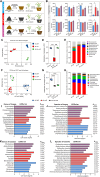
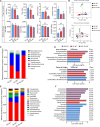
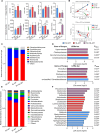
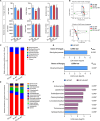
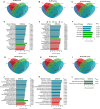

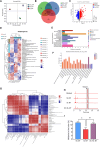


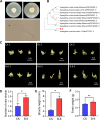
Similar articles
-
Soil Microbial Communities Affect the Growth and Secondary Metabolite Accumulation in Bletilla striata (Thunb.) Rchb. f.Front Microbiol. 2022 Jun 6;13:916418. doi: 10.3389/fmicb.2022.916418. eCollection 2022. Front Microbiol. 2022. PMID: 35733964 Free PMC article.
-
Effects of saffron-grape intercropping on saffron flower number and rhizosphere microbial community.BMC Microbiol. 2024 Dec 30;24(1):551. doi: 10.1186/s12866-024-03716-4. BMC Microbiol. 2024. PMID: 39736513 Free PMC article.
-
Responses of rhizosphere bacterial communities with different niche breadths to liquid fertilizer produced from Fuji apple wastes during planting process.Microbiol Spectr. 2025 Jul;13(7):e0206824. doi: 10.1128/spectrum.02068-24. Epub 2025 May 30. Microbiol Spectr. 2025. PMID: 40445252 Free PMC article.
-
Continuous cropping obstacles in medicinal plants: Driven by soil microbial communities and root exudates. A review.Plant Sci. 2025 Oct;359:112686. doi: 10.1016/j.plantsci.2025.112686. Epub 2025 Jul 26. Plant Sci. 2025. PMID: 40721126 Review.
-
A comprehensive review of ethnopharmacology, phytochemistry, pharmacological effects, and quality control of Bletilla striata.J Ethnopharmacol. 2025 Jul 9;353(Pt A):120273. doi: 10.1016/j.jep.2025.120273. Online ahead of print. J Ethnopharmacol. 2025. PMID: 40645542 Review.
References
-
- Muller DB, Vogel C, Bai Y, Vorholt JA. The Plant Microbiota: Systems-Level Insights and Perspectives. Annu Rev Genet. 2016;50:211–34. - PubMed
-
- Trivedi P, Leach JE, Tringe SG, Sa T, Singh BK. Plant-microbiome interactions: from community assembly to plant health. Nat Rev Microbiol. 2020;18(11):607–21. - PubMed
-
- Shimizu K, Hossain MM, Kato K, Kubota M, Hyakumachi M. Induction of defense responses in cucumber plants by using the cell-free filtrate of the plant growth-promoting fungus Penicillium simplicissimum GP17-2. J Oleo Sci. 2013;62(8):613–21. - PubMed
MeSH terms
Substances
Grants and funding
LinkOut - more resources
Full Text Sources
Medical

